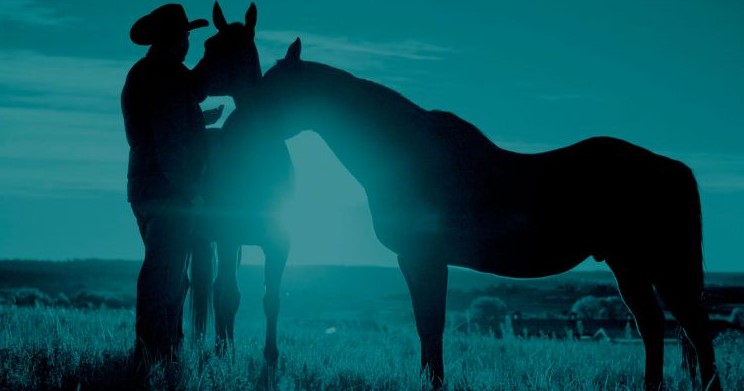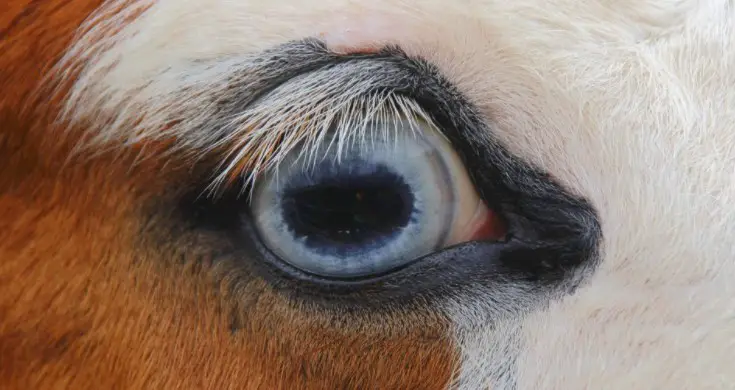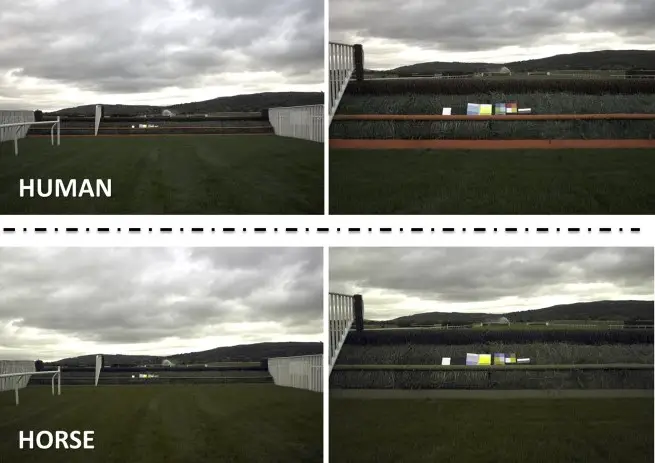It is believed that horses perform better during the day than at night, as they are seen as prey animals. The correct answer regarding this is more scientific than purely logical. Lots of movies portray horses as animals with better night vision than humans. Horses, in fact, because of the position of their eyes, can see much better than humans in general.
The eyes of a horse are located on the sides of its skull. Their positioning gives horses 360 degrees of vision. As a prey animal, this is a huge advantage. The downside, however, is the blindspot this creates. A horse’s blind spots are directly in front of its nose, about 3 to 4 meters, and directly behind it.
The Science Behind a Horse’s Night Vision

Photoreceptors
The eye contains photoreceptors responsible for processing light and producing images as vision. These photoreceptors are known as rods and cones and are found on the retina. The rod is crucial for scotopic vision, which is the capacity to see in dim light. Rods have a broader range of sensitivity than cones. That is why you are more likely to discern shapes in low light than details like color. Cones are responsible for photopic or daytime vision. It is the receptor that helps us identify colors.
A horse has more rods than cones in its retina. The ratio of rods to cones in a horse is 20:1. The higher number of rods allows horses to see in low light. In addition, horses have a reflecting membrane called the tapetum lucidum. This membrane reflects light through the retina, and thus, the amount of light available to the eye’s photoreceptors increases. Think of this as a more prolonged exposure setting on a camera that allows for more light. The horse’s huge eye also assists with achromatic tasks, especially in weak light, useful for predator detection.
Pupils
While humans, as you know, have a circular pupil, a horse’s is horizontal. This allows the horse to have a wide lateral field of vision. However, it can be difficult for the pupil to adjust the quantity of incoming light without making other portions of the visual field too dark when exposed to high light levels from one part of the visual field. The third eyelid, corpora nigra, on the inside corner of the eye that closes diagonally over the eye, solves this problem. It reduces the light entering from above because it shadows the bottom portion of the retina.

It is believed that horses have trouble adapting to rapid changes in light intensity, like when artificial lights are turned on or off. For humans, a blink or brief lowering of their eyelids helps them adjust their eyesight to such changes. In contrast, horses require about 15 minutes to adjust their vision in this situation.
Horse Vision vs. Human Vision
It might surprise you to know that humans also have a ratio of rods to cones that is 20:1. The significant difference between human eyes and horse eyes is the tapetum lucidum. Horses have one. Humans do not. The membrane is what enables horses to see in the dark better than humans. It increases the overall amount of light that is available for the eye’s photoreceptors. Therefore, horses are actually able to confidently make out obstacles in what we would perceive as total darkness. However, the tapetum lucidum is most effective at reflecting downward casting light—for example, moonlight from above. The membrane is not as useful in settings where the light is coming from the side or in front.

Interestingly, horses are unable to distinguish between shapes in the dark. For example, they are unable to differentiate between a square gate or an arched gate. They are only able to make out blocks and space. So, where a human would stumble around in an enclosure and need to feel walls or fencing with their hands—a horse may confidently be able to make out a fence. Additionally, the contrast between day vision and night vision is less pronounced for a horse.
Conclusion
Horses have excellent night vision, so don’t hesitate if you feel like taking your horse and going on a night journey.
